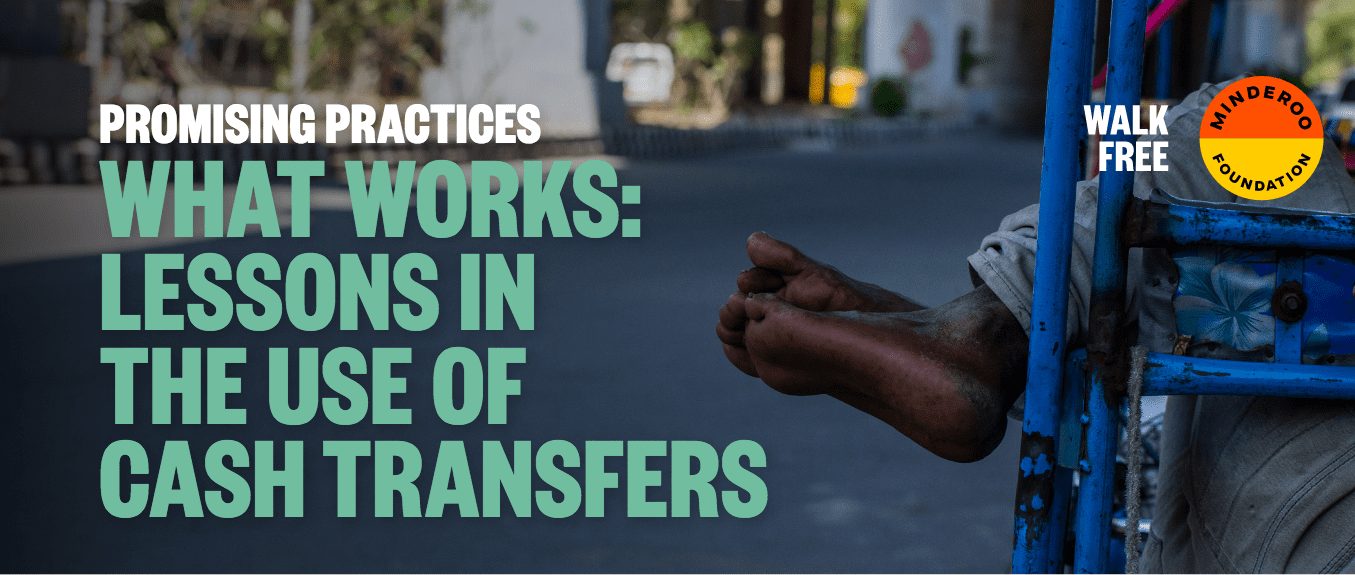
Promising Practices: Lessons in the Use of Cash Transfers
Cash transfers are used as a tool to empower and protect vulnerable individuals, households, and other groups from shocks and to mitigate vulnerabilities, such as low and variable income. These transfers can also be used to encourage positive change and behaviors among these groups, including increasing school attendance and reducing the incidence of early marriage. Of the 179 evaluations catalogued in the Promising Practices Database, just under nine per cent contained some element of financial or in-kind relief (n = 16). This policy paper sets out our observations on which practices work, which look promising, and which are ineffective based on the initial dataset for conditional and non-conditional cash transfers, to better inform future program design.
How does it help? Cash transfers and modern slavery
Poverty is a key factor which drives risk to modern slavery — particularly for children. For many vulnerable families, there is no real choice between sending a child to school or putting the child to work or marrying them early to help lessen the economic burden on the family. The majority of cash transfer programs within the initial Promising Practices Database combat this phenomenon by linking assistance to children’s education or health outcomes.
Conditional cash transfers (CCT) make these conditions explicit, as they involve cash or in-kind assistance contingent on particular outcomes, for example, perfect school attendance rates in a household or delaying the first age of marriage for a child. However, non-conditional cash transfers (NCT) do not set strict conditions on receiving the assistance among the target population, but rather make assistance available based on the theory that removing the need to send children to work, or to an early marriage, will spark behavioral change itself.
Read the full report here.
